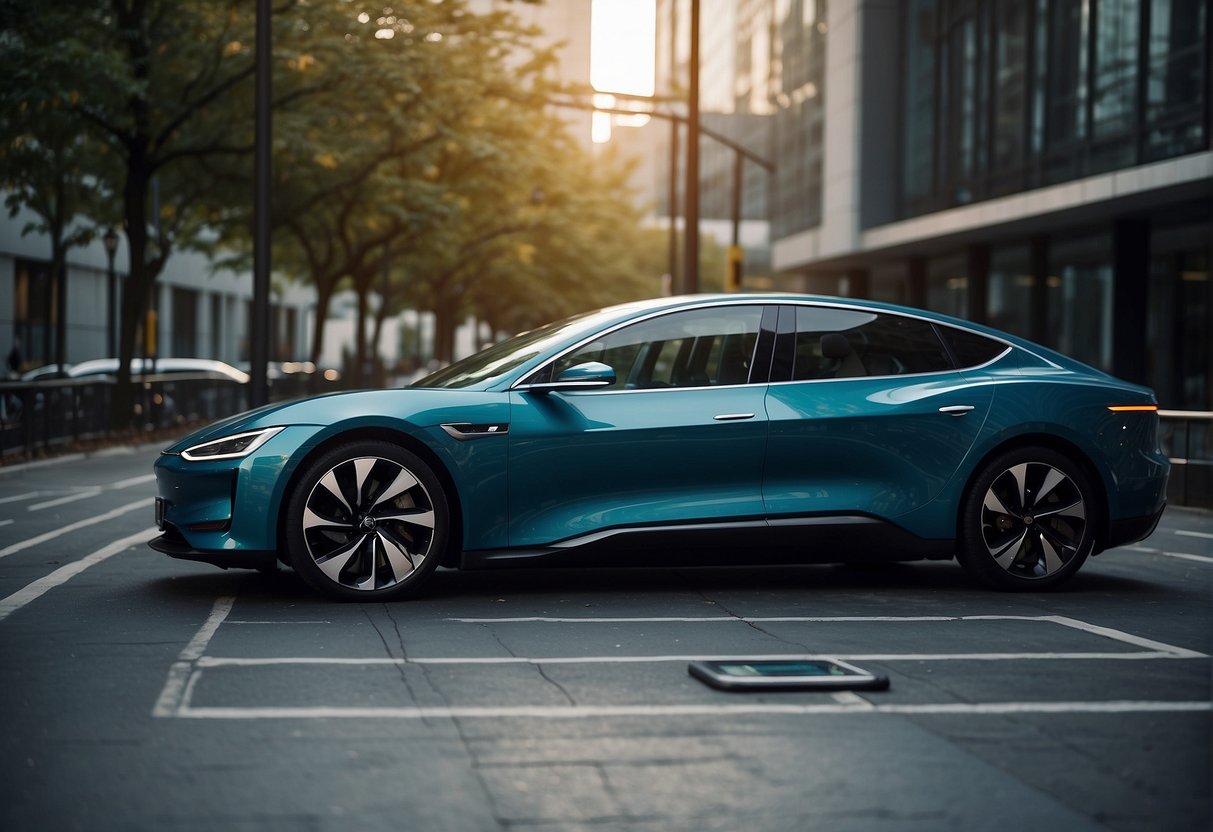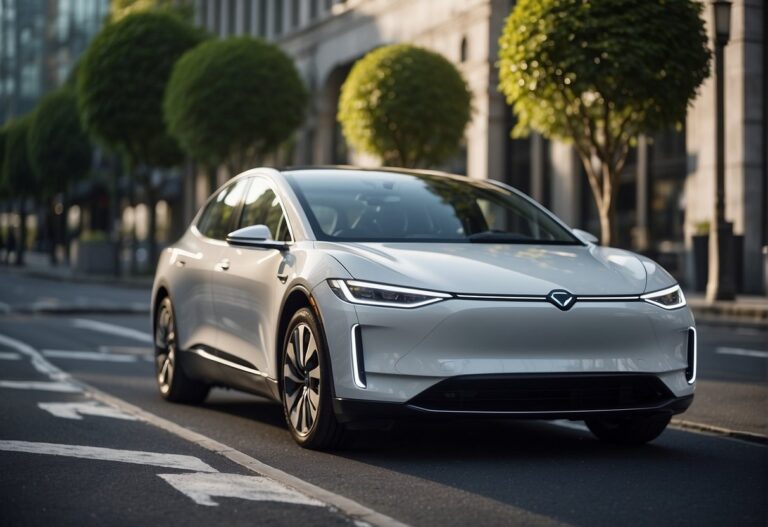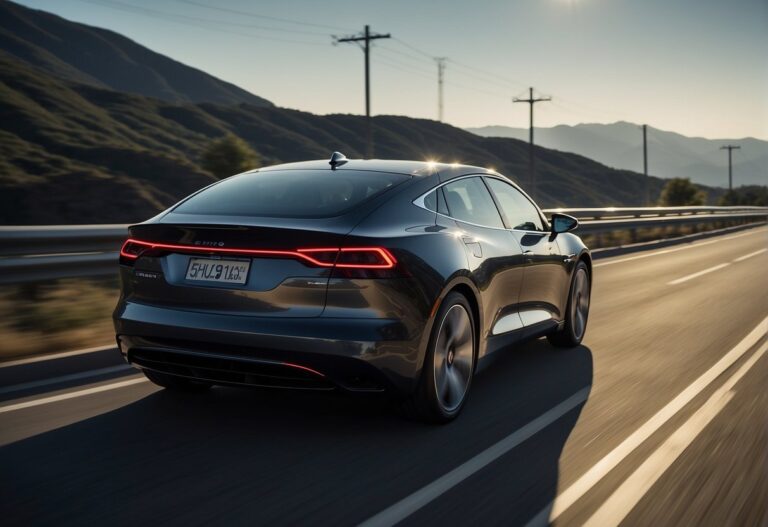Wireless EV charging is an innovative technology that is set to revolutionize the way electric vehicles are charged. Rather than plugging in a charging cable, wireless EV charging uses magnetic induction to transfer energy from a charging pad to the vehicle’s battery. This technology promises to make charging more convenient and efficient for electric vehicle owners.
The basic principle of wireless charging is similar to how smartphones charge wirelessly via magnetic induction. A magnetic coil in the charger creates an electromagnetic field, which induces a current in another coil on the car’s underside. When the two coils align, charging begins. Wireless charging for EVs is considered as efficient and fast as charging with a plug, with most EV plugs having 80-95 percent efficiency ratings.
Major automakers and companies are already investing in wireless EV charging technology, and it is expected to become more widely available in the coming years. As the demand for electric vehicles continues to grow, wireless EV charging will play an important role in making EV ownership more convenient and accessible.
Understanding Wireless EV Charging Technology
Wireless EV charging technology is an emerging technology that is poised to revolutionize the way electric vehicles are charged. This technology uses an electromagnetic field to transfer energy between two objects, a charging pad and an electric car, without the need for any physical connection. The technology has been in development for several years and is now in the process of being commercialized.
The Basics of Inductive Charging
Inductive charging is the most common method used in wireless EV charging technology. This method involves the use of a charging pad that generates an electromagnetic field. The electric car is equipped with a receiver coil that is placed in close proximity to the charging pad. The receiver coil picks up the electromagnetic field generated by the charging pad and converts it into electrical energy that is used to charge the car’s battery.
Advancements in Magnetic Resonance Charging
Magnetic resonance charging is another method used in wireless EV charging technology. This method involves the use of two coils, a transmitter coil and a receiver coil, that are placed in close proximity to each other. The transmitter coil generates an electromagnetic field that resonates with the receiver coil, which then converts the energy into electrical energy that is used to charge the car’s battery. This method is more efficient than inductive charging and can transfer energy over greater distances.
Comparing Wireless and Wired Charging Methods
Wireless charging has several advantages over wired charging methods. For one, it eliminates the need for charging cables, which can be cumbersome and unsightly. Wireless charging pads can also be installed in public areas, such as parking lots and garages, making it more convenient for electric car owners to charge their vehicles. Additionally, wireless charging is more efficient than wired charging, with efficiency ratings of 80-95%, compared to 70-80% for wired charging.
However, wireless charging technology is still in its early stages and there are some challenges that need to be addressed. For example, the charging pads need to be installed in close proximity to the electric car, which can limit their range. Additionally, the technology is more expensive than wired charging methods, which may limit its adoption in the short term.
Overall, wireless EV charging technology has the potential to revolutionize the way electric vehicles are charged. With advancements in magnetic resonance charging, the technology is becoming more efficient and can transfer energy over greater distances. As the technology continues to evolve, it is likely that we will see more widespread adoption of wireless charging methods in the coming years.
The Future of Wireless EV Charging
Wireless EV charging is rapidly gaining traction in the automotive industry, with major automakers investing heavily in the technology. The future of wireless EV charging looks bright, with many developments underway that will make it more accessible and convenient for EV owners.
Integration in Public and Private Spaces
Wireless EV charging is expected to become more widely available in public and private spaces in the coming years. This will include charging stations at public parking lots, shopping centers, and other high-traffic areas. Additionally, wireless charging could be integrated into roads and highways, allowing EVs to charge while driving.
Ongoing Developments by Major Automakers
Major automakers are investing heavily in wireless EV charging technology. For example, BMW has developed a wireless charging pad that can charge its i3 electric car in just 3.5 hours. Other automakers, such as Tesla and Nissan, are also working on wireless charging solutions.
Standardization Efforts and Global Adoption
Standardization efforts are underway to ensure that wireless EV charging is compatible across different makes and models of electric vehicles. The Society of Automotive Engineers (SAE) is working on a global standard for wireless charging, which will make it easier for EV owners to charge their vehicles at any charging station.
Global adoption of wireless EV charging is also expected to increase in the coming years. Electric taxis and fleet vehicles are expected to be early adopters of the technology, as it will allow them to charge more quickly and efficiently. Additionally, public roadways could be outfitted with wireless charging technology, making it easier for EV owners to travel long distances without worrying about running out of charge.
In conclusion, the future of wireless EV charging looks bright, with many developments underway that will make it more accessible and convenient for EV owners. As standardization efforts continue and global adoption increases, wireless charging is expected to become a more common feature in public and private spaces.
Frequently Asked Questions
What is the principle behind wireless EV charging technology?
Wireless EV charging technology is based on the principle of electromagnetic induction. It involves using an electromagnetic field to transfer energy from a charging pad to a receiver coil on the underside of the EV. Once the two coils are aligned, the charging process begins.
What are the efficiency rates for wireless EV charging systems?
Wireless EV charging systems have efficiency rates of up to 95 percent, which is comparable to traditional wired charging methods. The charging speed and efficiency depend on various factors such as the size of the charging pad, the distance between the pad and the receiver coil, and the power output of the charging pad.
Can electric vehicles be charged wirelessly while driving, and how?
Currently, wireless EV charging technology is not yet advanced enough to charge electric vehicles while they are driving. However, some companies are working on developing this technology, which involves embedding charging coils in the road surface to wirelessly charge EVs as they drive.
What are the estimated costs associated with installing a wireless EV charger?
The cost of installing a wireless EV charger depends on various factors such as the size of the charging pad, the power output of the charging pad, and the type of EV being charged. On average, the cost of installing a wireless EV charger can range from $1,000 to $3,000.
What are the current limitations facing wireless EV charging adoption?
The current limitations facing wireless EV charging adoption include the high cost of installation, the limited availability of charging infrastructure, and the need for standardized charging protocols. Additionally, wireless charging is less efficient than wired charging, which may deter some EV owners from adopting the technology.
How does the charging speed of wireless EV systems compare to traditional charging methods?
The charging speed of wireless EV systems is comparable to traditional wired charging methods. However, the charging speed depends on various factors such as the size of the charging pad, the distance between the pad and the receiver coil, and the power output of the charging pad.



